What are some of the vital systems in a house? You’re probably thinking of electrical, cooling, heating, plumbing, and gas lines—all are good answers. While often overlooked, a decent drainage system is crucial for every home.
Many homeowners end up frustrated when water seeps into the house and causes damage. This is often a result of poorly constructed drainage systems. Poor drainage can cause immense damage to the house foundation, plants, and tree roots. It also tends to leave lawns muddy and unsightly. Constructing a downspout drainage system is one of the most popular options among homeowners.
But what pipe to use for the downspout drain? This guide has highlighted the best pipe you can use for your downspout drain, types of drainage pipes, and installation tips.
The Best Pipe to Use for Downspout Drain
The first step to constructing a fully functional drainage system is to choose the best pipe. It’s important to keep in mind that water exerts immense pressure on the pipes, especially in areas with heavy rain.
Some pipes are designed to withstand high-pressure levels, while others wouldn’t last very long. We’ve looked at some of the best pipe options for downspout drainages and prepared this information to help you make an informed decision on what pipe to use for the downspout drain.
PVC, or Polyvinyl Chloride pipes, is the best option for underground water drainage. PVC pipes are designed to withstand pressure and are highly durable. Moreover, they are malleable and come in several different sizes.
PVC drainage pipes are also very eco-friendly, which makes them a popular choice among homeowners. You might be familiar with Schedule 40 PVC pipes, which are often used for indoor plumbing. This is a great option, but the SDR 35 PVC might be more suitable for outdoor downspout drainage, as it is lighter and more affordable.
Both Schedule 40 and SDR 35 PVC are 4-inch in diameter, with thick walls, tight-sealing joints, and smooth inner surfaces. The major difference is Schedule 40 pipes have thicker side walls than the SDR 35 pipes. Either would be appropriate for your downspout drain, as they both can’t be penetrated by roots and are easy to clean in case of clogs.
It’s also advisable to go for PVC-U or unplasticized PVC. For this type, no plasticizers are used during manufacturing, which makes it perfect for transporting drinking water and for use in drainage and sewer systems. Another reason why PVC-U would be ideal is these pipes are recyclable and eco-friendly.
Why Install a French/Underground Drain?
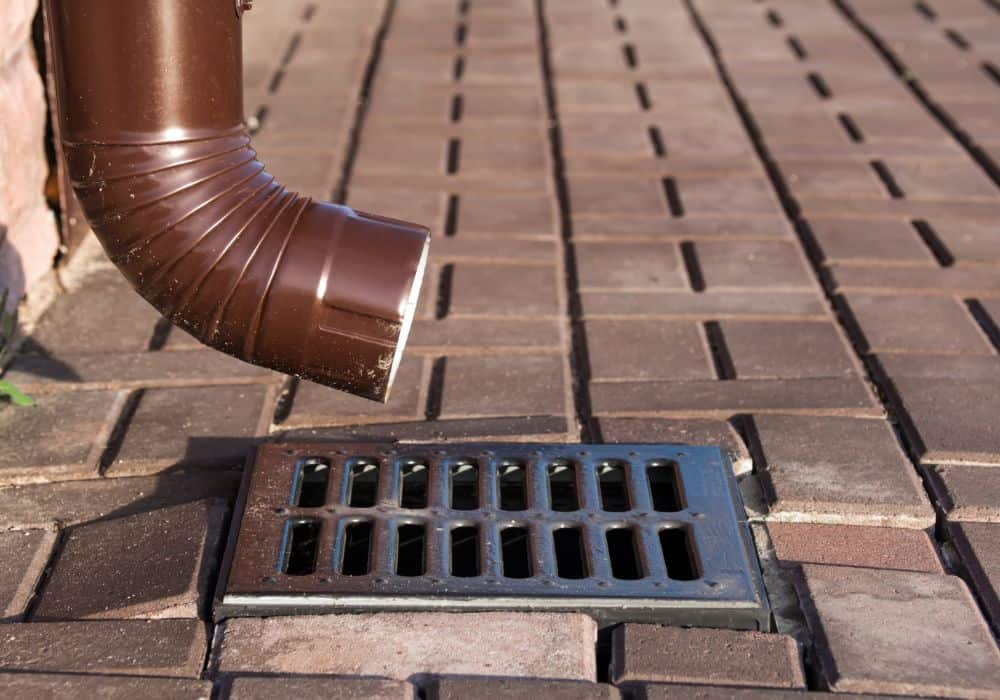
French drains help prevent flooding, particularly foundation and chronic basement flooding problems.
With a typical guttering system, the rainwater is emptied near the home’s foundation. As such, most houses have downspout extensions and splash blocks that carry the water away from the foundation to prevent damage. This is ideal for grounds where the home slopes away from the foundation.
In cases where the home doesn’t slope on all four sides, sometimes the water comes out of the downspout and flows towards the house instead of away from it. As a result, gallons of water end up sitting against the home foundation and causing damage.
Underground drains are the solution to this problem. A French drain or underground drain is designed to carry gutter water away from your house. The French drain is connected to the end of your guttering system, the downspout.
A French drain is fully underground and only visible at the connection point with the downspout and the release point where there is a pop-up drain. An underground drain allows you to transport rainwater far enough so that it does not cause any damage.
The pop-up drain works on a pressure system. When there’s a significant pressure build-up, the top of the drain opens and allows an even dispersal of water.
Installation Tips for Downspout Drains
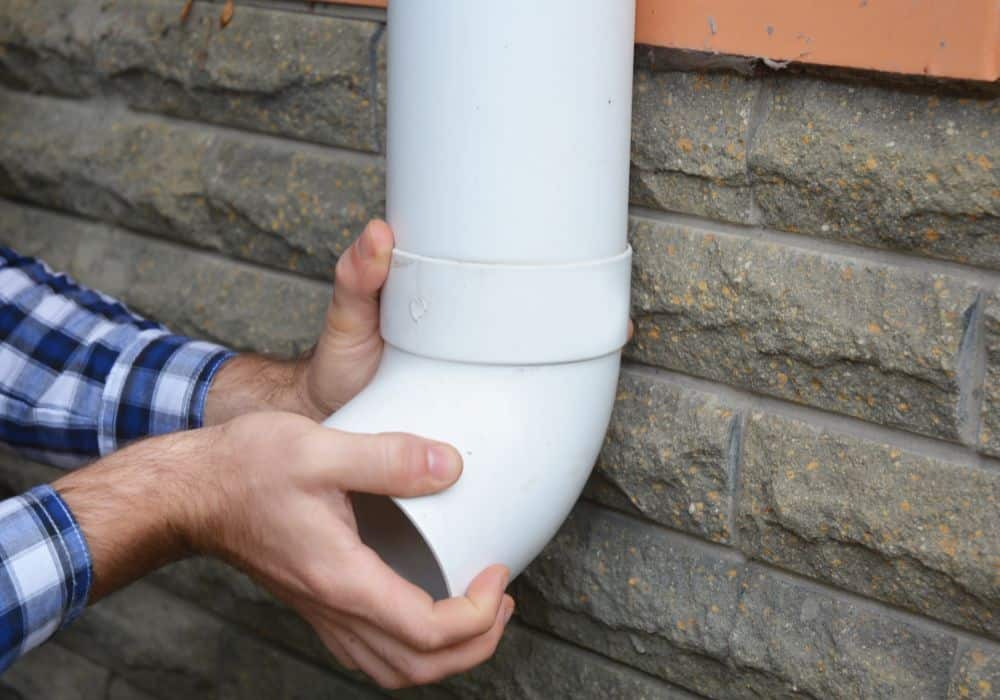
A 4-inch diameter pipe is ideal for downspout lines, as it can handle large quantities of water and can easily be cleaned out in case clogging occurs.
There are a couple of fittings you can use to change directions in buried downspout drainage systems:
- Wyes
- Sweep 90s
- 45-degree fittings
Sweep 90s have a gentle bend, making them ideal for use below the downspout. A sweep 90 changes the water direction, from falling vertically from the roof to traveling horizontally underground. A 90-degree fitting should never be used to make a bend in buried downspout drain lines. It’s more advisable to use two 45-degree fittings with a 1-foot pipe between the fittings for minimal friction during cleaning.
Wye fittings make it possible to connect two downspout drain lines from separate downspouts. They have a 45-degree connection to the main drain line, which is the perfect gentle bend.
Other Recommended Drainage Pipes
While PVC pipes are the best choice, they’re not your only option. There are several other piping options, and some might be suitable for specific situations. Here are some of the best alternative drainage pipes you can consider.
1. Corrugated Drainage Pipes
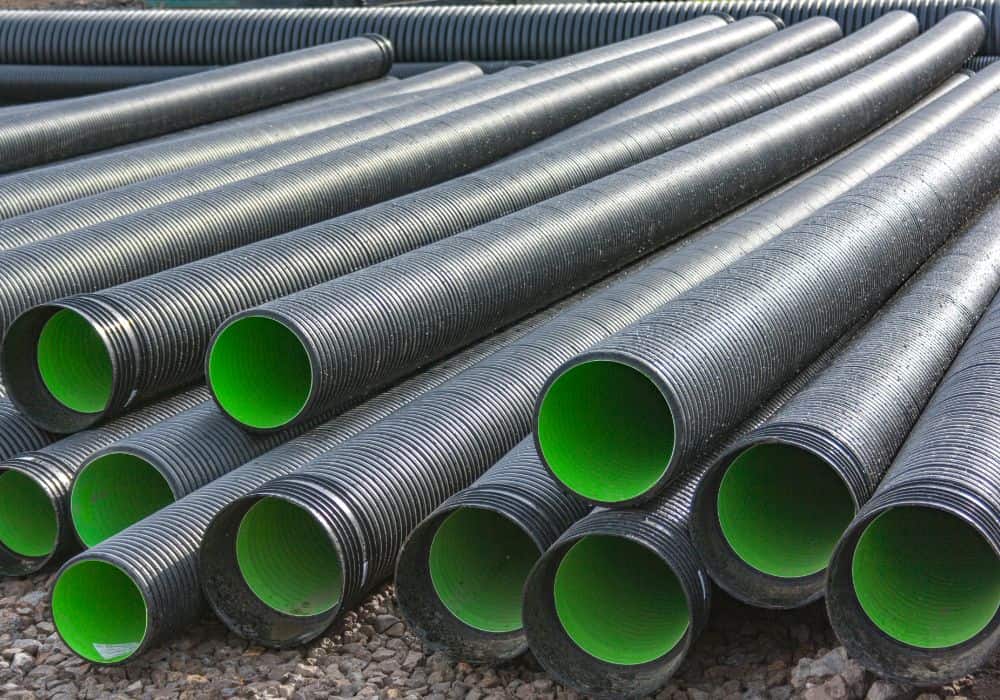
Corrugated pipes are made from a very flexible material and are designed with ridges and grooves that alternate to form the corrugation. They are solid and durable, and where flexibility is a necessity, corrugated pipes are the most suitable option.
Corrugated pipes are also relatively cheaper and more lightweight, which makes them an excellent option for carrying water runoff from eaves and gutters. Due to the rigidity of PVC pipes, they are more suitable for underground water drainage systems.
For waterproofing, corrugated pipes would be ideal. They are less expensive, easy to install, and capable of longer runs with bends to accommodate turns. PVCs often require the use of elbow joints and glue to make turns, but with corrugated pipes, you’re not restricted to 45-degree and 90-degree angles only.
Moreover, corrugated pipes are self-cleaning, as the groves within the pipe walls cause turbulence, encouraging the continuous movement of water and debris. With the perforations within the ridges, larger debris is deterred from entering the system, while water continues to enter all along the length of the pipe.
The downside of using corrugated pipes is if they’re not buried underground, they are prone to damage by pets, lawnmowers, and even foot traffic. It’s also easy for roots to grow into the pipe, which causes water to flow slowly, and the debris collected by the roots and ridges can cause clogs.
There are two types of corrugated drainage pipes:
- Single-wall corrugated pipes: For situations where low cost and flexibility are important, this would be the ideal option. Single-wall corrugated drainage pipes are easy to install and economical but prone to clogging.
- Double-wall corrugated pipes: These pipes have a ring-shaped outer structure and a smooth inner wall, unlike single-wall corrugated pipes, which have ridges and grooves. Double-wall corrugated pipes combine steel’s toughness with plastic’s corrosion resistance. The smooth interior of the walls eliminates the clogging problem.
2. Concrete Pipes
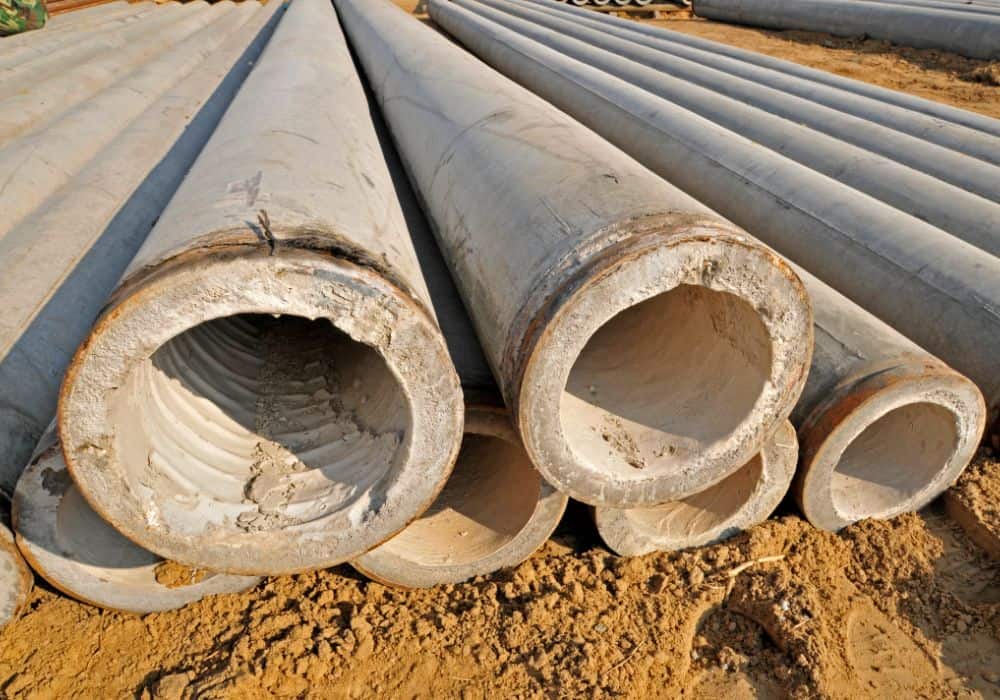
Concrete drainage pipes are primarily used on an industrial scale, especially for water and sewer systems. They run underground, collecting and transporting storm water or waste. Concrete drainage pipes guarantee zero leaks and are highly durable.
Reinforced concrete pipe is among the most commonly used pipes, particularly for directing the flow of water and other liquids underground. They have a very long lifespan and are designed to withstand all manner of environmental stressors.
Reinforced concrete is among the strongest and most durable building materials, which is why these pipes are often used for utilities like large-scale irrigation, storm sewers, culverts, and sanitary sewers. While they are great for large-scale applications, concrete drainage pipes are hard to install and even harder to clean.
Reinforced concrete pipes are the number one choice for city planners, particularly for storm drains and city sewer systems, mainly because of their sturdiness, resistance to stressors, and long lifespan. RCP is ideal for storm drainage, as it allows for heavy water flow without eroding the soil.
3. Polyethylene (PE) Pipes
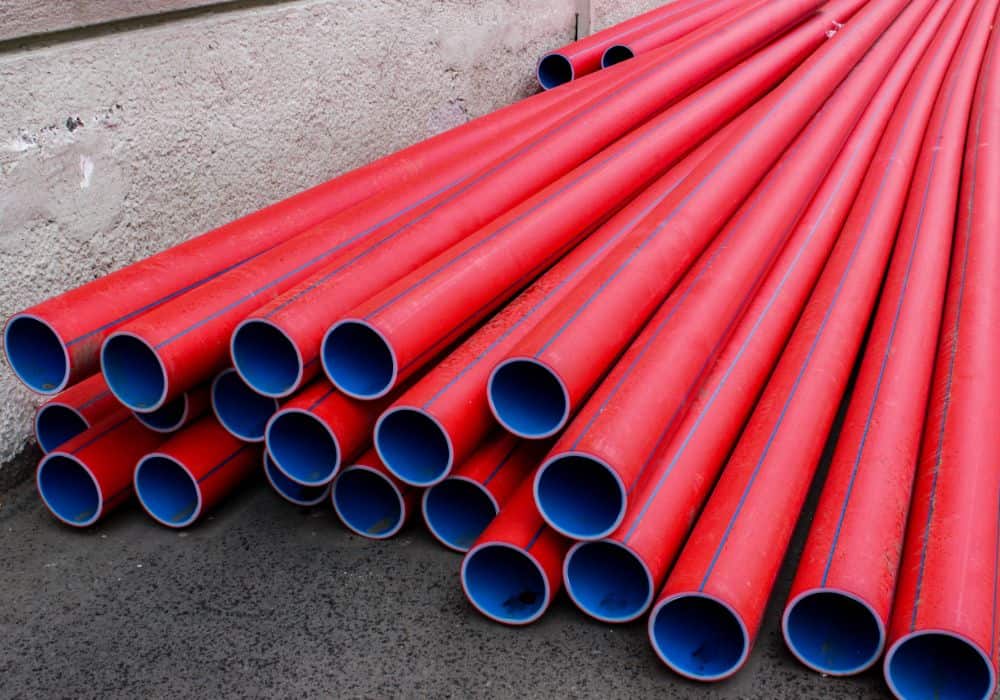
Polyethylene pipes come in rolled coils of various lengths and can go up to 40 feet. Polyethylene is a thermoplastic material made by polymerizing ethylene. Small-diameter polyethylene pipes are often coiled, while the larger-diameter ones are straight. PE pipes have various wall thicknesses, depending on the dimension system.
Polyethylene pipes are lightweight, flexible, durable, and resistant to chemicals. As such, they are ideal for many use cases, including sewers, drainage lines, waste disposal, and natural gas distribution. High-density PE pipes are more durable than PVC pipes, but the downside is they are relatively pricey.
Conclusion
When looking to install a drainage system, PVC pipes are your best option. Corrugated pipes are more flexible, hence easier to work with, but they are not as durable as PVC pipes. Some might say corrugated pipes are cheaper and easier to install, but since they are prone to damage, the cost of replacing them can be quite high in the long run.
PVC pipes are less flexible, and their installation is not easy, but they offer great benefits in return. They are the strongest, most durable, and designed to withhold pressure and weight. They’re also less prone to clogging, and cleaning them is pretty easy. With PVC pipes, you get more bang for your buck.
We hope the information above has been helpful. If you have any questions or concerns, feel free to comment below, and we’ll be in touch!
